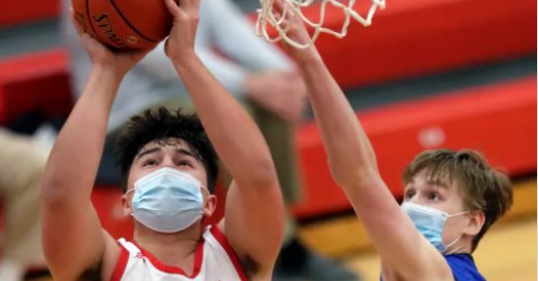
We are nearly one year into the pandemic and many school districts are still feeling the impact that it’s having on their sports programs. New information regarding how to safely reopen sporting activities seems to be emerging every day. With so many sources available, who should you gather your information from? And since there are so many ways to deal with the issue, ranging from mitigation all the way to cancellation, what choices should your school district make?
The National Federation of State High School Associations has issued guidance that lists the potential for the spread of COVID-19 within sports as high, moderate, and low risk. (https://www.nfhs.org/media/3812287/2020-nfhs-guidance-for-opening-up-high-school-athletics-and-activities-nfhs-smac-may-15_2020-final.pdf)
- High-risk sports are those that involve sustained close contact with other players. These sports include wrestling, football, lacrosse, competitive cheerleading, and dance.
- Moderate risk sports are those that involve intermediate close contact or that have equipment that is designed in a way that makes it hard to clean between contact with participants. These sports include basketball, baseball, softball, volleyball, soccer, field hockey, ice hockey, tennis, and gymnastics.
- Lower risk sports are those that allow for social distancing and have no need to share equipment. These sports include golf, skiing, running, swimming, sideline cheerleading, field events, and weightlifting.
The Centers for Disease Control (CDC) last issued guidelines for playing sports on December 31, 2020 (https://www.cdc.gov/coronavirus/2019-ncov/daily-life-coping/playing-sports.html). The article discusses a variety of safe ways to handle practices and sporting events.
The CDC also issued a Sports Program Frequently Asked Questions discussion on December 31, 2020 (https://www.cdc.gov/coronavirus/2019-ncov/community/schools-childcare/youth-sports-faq.html). It provides information for many of the frequently asked questions surrounding the subject of COVID-19 and Sports.
Some states have issued their own guidance. However, always follow state and federal guidelines. State associations may be driven by other pressures than safety-first.
We recommend that you consider using authority sources, such as the CDC or your state department of health to determine the standard of care that should be provided to your school’s staff, participants and spectators.
For more details on mitigation, guidelines see the 2019 CDC considerations for youth sports that were updated last month to include COVID-19 related protocols. https://www.cdc.gov/coronavirus/2019-ncov/community/schools-childcare/youth-sports.html
To download the PDF version of this article, click here.
